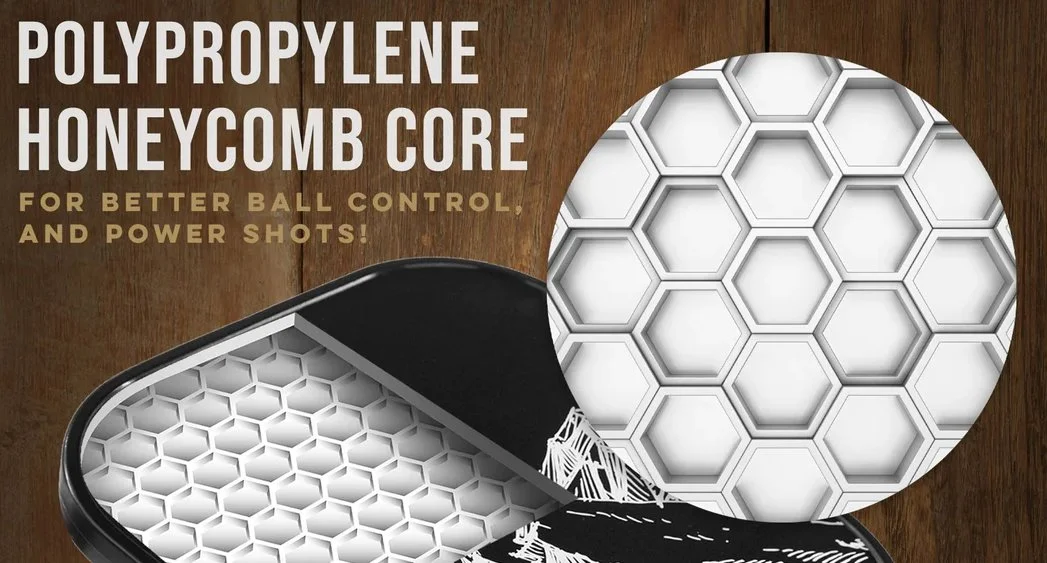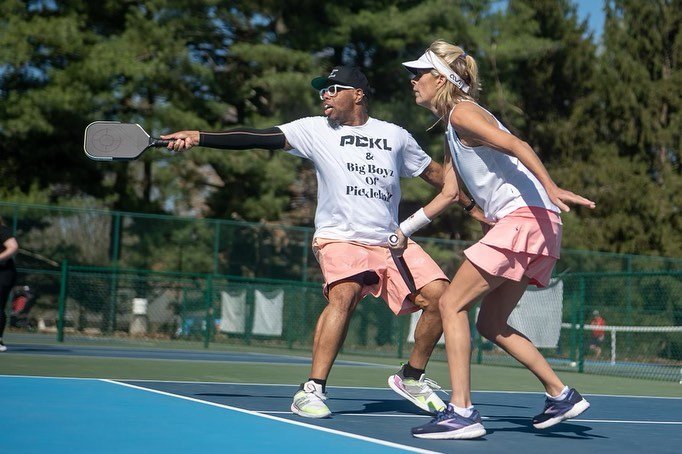Pickleball Paddle Lifespan: How Long Should You Expect Your Paddle to Last?
The lifespan of a pickleball paddle depends on several factors, such as the quality of the materials, frequency of use, and how well it is taken care of. Let’s break down each of these key factors to gain a better understanding of what pickleball players should do to help their pickleball paddles last and the signs it is time to get a new paddle.
Pickleball Paddle Materials
There are many choices in the world of pickleball paddles, starting with the materials used in their construction. Outside of wooden paddles, most high-quality paddles consist of a core and surface, with an outer edge guard that protects the paddle face, handle, and core from damage.
Originally, wood paddles were used, but they tend to deteriorate quickly, and so other materials were used in pickleball paddle construction. Today many of the paddle cores are made with a polypropylene/polymer material in a honeycomb design which provides optimal mechanical performance. Paddle cores vary in thickness, and while most are protected with an edge guard, some edgeless paddles exist.
Today, many players are looking for the type of paddle surface that can provide more power, spin, and durability. The progression of surface materials used in pickleball began with fiberglass composite paddles and graphite paddles, then moved onto raw or woven carbon fiber. Each iteration was a progression in performance characteristics as the sport matured.
Frequency of Play and Usage
You can’t answer the question, “How long do pickleball paddles last?” without knowing how frequently the paddle is used. How many times you play has a direct correlation to how long your paddle will last, and one answer, does not fit all.
Paddles that only see infrequent use can last for a few years. Paddles that are played with multiple times per week will likely need replacement in a matter of months.
To determine when to replace the paddle, check for visible wear and tear, and keep an eye on how the paddle performs on the pickleball court during games. If the feel or sound of the paddle is off, or you notice visible wear and tear, it is likely time for a replacement.
Paddle Cleaning
Care of your paddle begins by maintaining your paddle's overall health, and part of this is knowing how to clean it. Cleaning your paddle is best done after each use. Getting the dirt and ball remnants off your paddle will keep your paddle playing at its prime. It will also slow the degradation of your paddle and give you more time with the paddle you love.
Proper Paddle Storage
Recreational players may not realize that how they store their paddles matters. Storing your paddle properly inside a paddle cover will help protect it from external damage and dents. Many professional players will clean their paddle, place it in its cover, and then store it in their pickleball bag alongside the rest of their pickleball equipment.
Recent studies have also shown that you should avoid exposing your paddle to extreme temperatures or leaving it in a hot car for prolonged periods. This is because high temperatures can cause the materials in the paddle to expand or warp, which can lead to damage or a decrease in performance. Similarly, exposing your paddle to very cold temperatures can cause the materials to contract and become brittle, which can lead to dead spots or a decrease in the size and shape of the sweet spot.
The Lifespan of Your Pickleball Paddle
Ultimately, the lifespan of a pickleball paddle varies, but most paddles that see regular use with good care last between 1-2 years. It’s important to inspect your paddle for signs of wear periodically and check how the paddle feels and how the paddle sounds when hitting balls. If you notice your gameplay suffering during pickleball games, your paddle may need replacement.
If you are looking to replace your paddle, check out these paddles!








